Principles Of UX Design: A Reflection
WHAT IS USER EXPERIENCE DESIGN?
User experience design is compiled of many different ideas. But, the main thing we focus on in UX is the user and their experience with a certain design or product. UX encompasses all aspects of the users’ interactions with the company, its services, and its products. This has to do with the users’ interactions, meeting the needs of the user, and improvements to UI. As you can see, UX is created around the UI. If we’re not designing for the user, then we’re not designing at all.
A good way to think about this is by thinking of a simple example such as Instagram. The designers of Instagram could have created anything. They could have included random features and buttons and designs that could be accessible and usable to anyone. However, this wouldn’t allow the app to be as successful as it is today. Instead, the designers have to think about the user and their target audience. These are the people that would most likely make use of the app. Since Instagram is used by a younger audience, designers have to build the app’s look and functionality around that and cater to their needs.
HOW CAN WE CATER TO OUR USERS?
Knowing what UX is, one question comes up, “How do we design for the user?” How do we differentiate between designing for ourselves and designing for others? Well, the key here is empathy. We all know what empathy is- it’s the ability to understand and share the feelings of another. When you empathize with others, you can sense other people’s emotions and can try and imagine what someone else might be thinking or feeling. As humans, empathy is rooted deeply in our brains, bodies, and our evolutionary history. Without knowing it, we empathize with others daily and see the world through other people’s eyes- see what they see and feel what they feel.
So how do we apply empathy to UX? We do this by combining it with something called the design thinking process. By combining the two, we get to understand the user and design for them from a psychological standpoint. Psychology tries to understand the mind, while a designer tries to please the mind. As a designer, you are creating content for a person or a group of people. In order to create something effective that the user wants to see, you need to understand their needs first. If you do this, then you can understand what to create. Because a designer doesn’t create for themselves, they create for others.
THE DESIGN THINKING PROCESS
Design thinking is a process where we seek to understand the user (the audience), challenge assumptions, and redefine problems in an attempt to identify alternative solutions. In order to do this, we need to dig deep into our user’s thoughts because the solution may not be instantly apparent with our initial level of understanding. We need to come into the process with an open mind and set aside assumptions to properly empathize with the user.
The design thinking process is made up of 5 steps- empathize, define, ideate, prototype, and test. Working through each step with a real-world example has allowed me to fully understand what goes into the whole process.
STEP 1: EMPATHIZE
As I mentioned before, empathy is the main step in beginning your research and project so that you, as a designer, can gain an understanding of the problem you’re trying to solve. This means finding more about the person you are problem-solving for and understanding their needs so you can curate your ideas around them. When designing for a specific audience, you need to conduct polls and interviews to understand the features and aesthetics that they want to see in a certain product, service, or design. If you’re creating this app for them, you need to understand and empathize with what they want to see, not yourself.
I conducted an example of this by empathizing with real-life people in a reality show. I watched an episode of Undercover Boss and followed the needs and thoughts of the CEO and a worker. I followed their journey and created an empathy map that illustrated what they think and feel, say and do, hear, see, their pain points, and their gains.
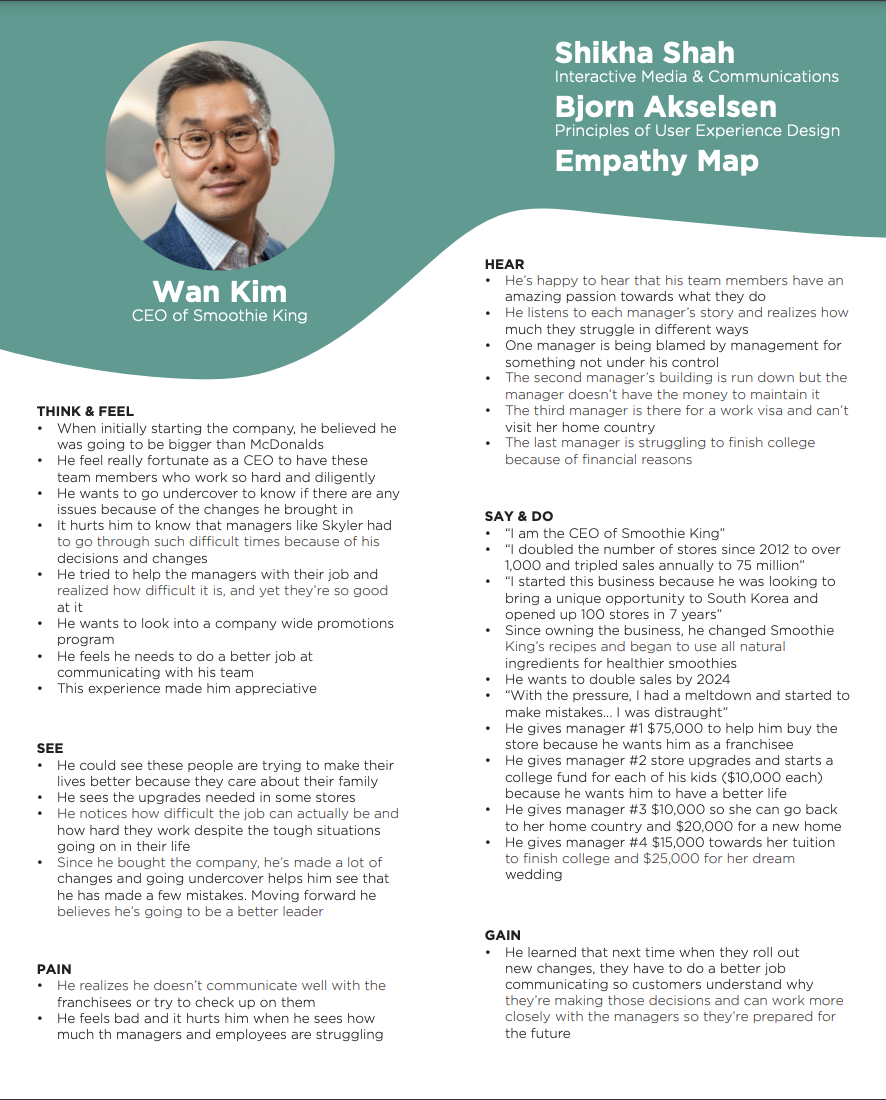
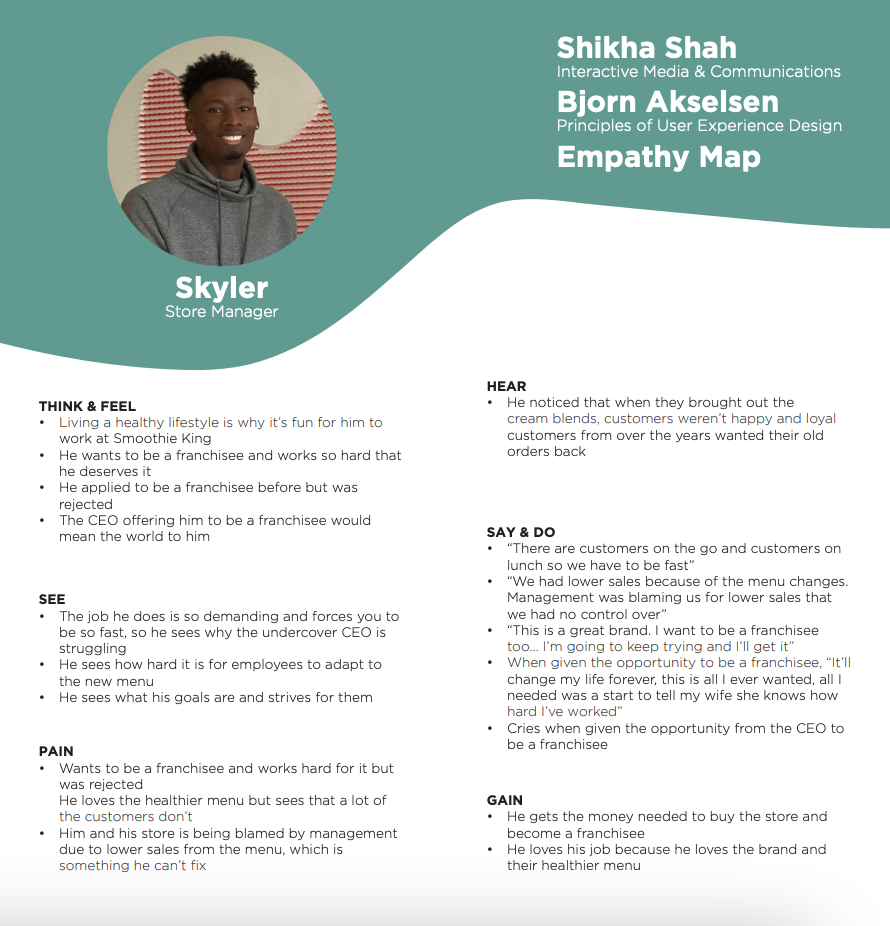
Noting everything about their behavior and actions allowed me to see their needs and insights. With this information, if I were to design a product or service for them, I can clearly see what they need and create something that would be useful to both of them.
Using this empathy map, I can see Skyler’s need is to be a franchise owner and Wan’s need is to increase his communication with his customers and franchisees. Knowing this, I can create a product or service that allowed them both to do just that.
STEP 2: DEFINE
Now that we understand our users, we need to define a problem. Using what we learned from the empathy step, we can now understand what problem it is they need help solving. The best way to do this is to create a problem statement. A problem statement is a concise description of the problem that needs to be solved. Without this, there would be no need for a solution, therefore no need for the design thinking process.
In order to understand this step, let’s take a look at an example surrounding commonly used apps. Spotify, Apple Music, and Pandora are three widely used music apps. However, each one of them is far from perfect. Although they might have their positive points, users also get frustrated with some of their features or their lack of features. I browsed the app store to find reviews left by users and came up with problem statements for each one.
Having these problem statements readily available allows me to come up with ideas for how the apps can be improved. For example, Spotify needs fewer ads to make listening to music more enjoyable. Apple Music needs better organization so they can find songs and playlists with more ease. And Pandora needs features that allow it to be similar to listening to the radio to broaden its music experience.
STEP 3: IDEATE
Knowing what the problem is, we can now start to “think outside the box” to identify solutions and look for alternative ways of viewing the problem. A good way to begin ideation is to ask questions. The goal is to brainstorm, whether the idea may be good or bad because you want to come up with many possible solutions to choose from.
Let’s continue the example from the music apps. Now that we have multiple problem statements set in place, how can we come up with as many solutions as possible? There are different techniques that help us with this process. Some allow us to brain dump and come up with as many solutions as possible, while others allow us to sketch it out and see it from a visual standpoint.
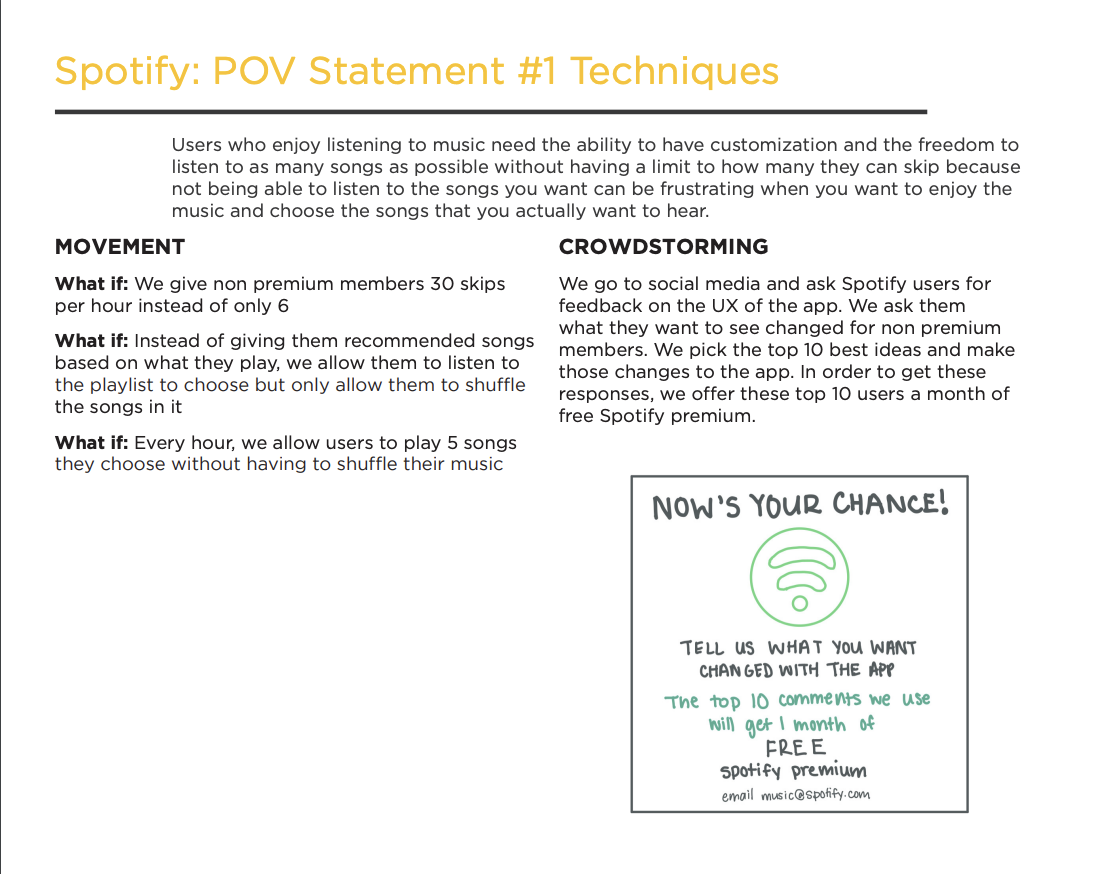
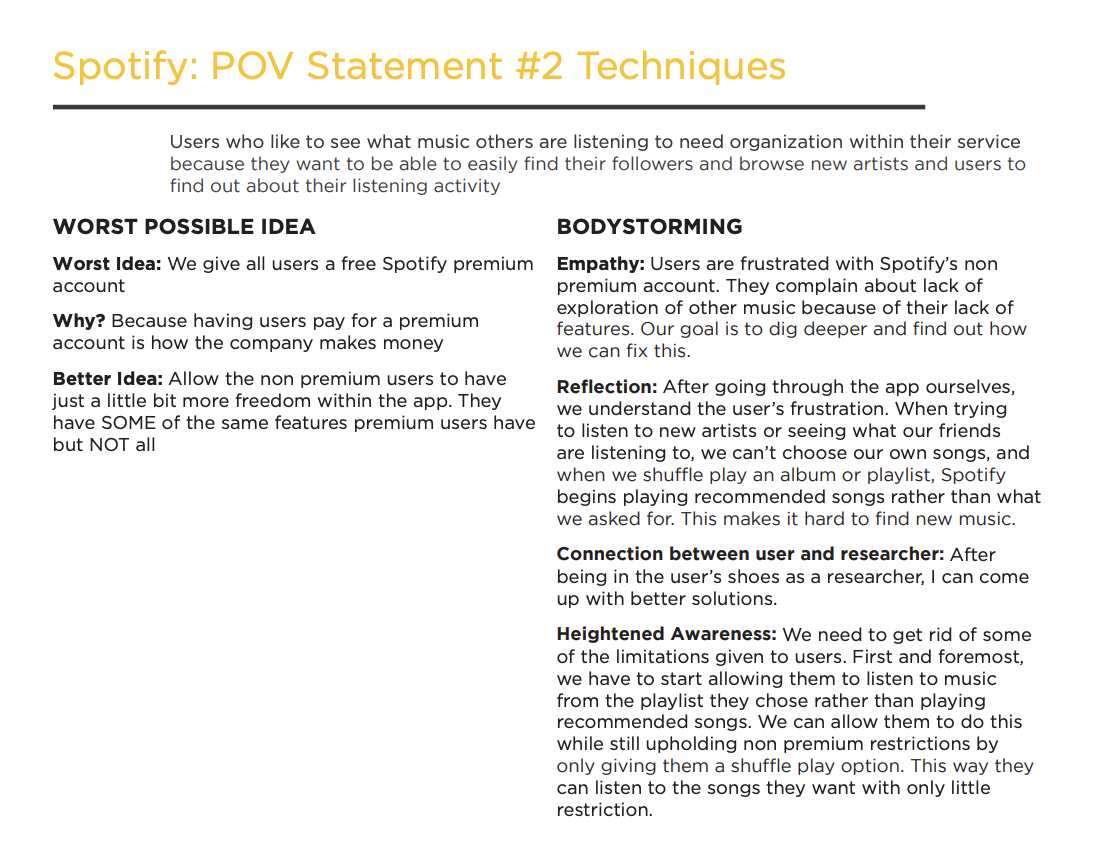
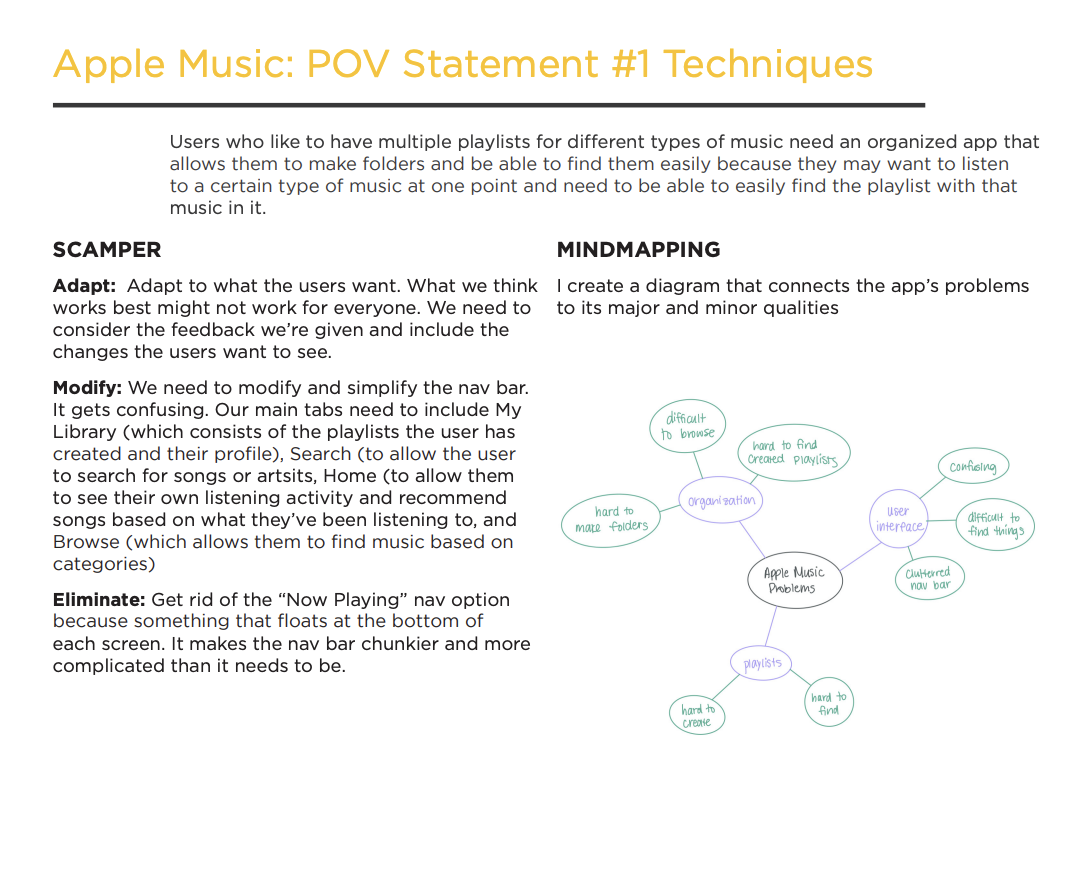
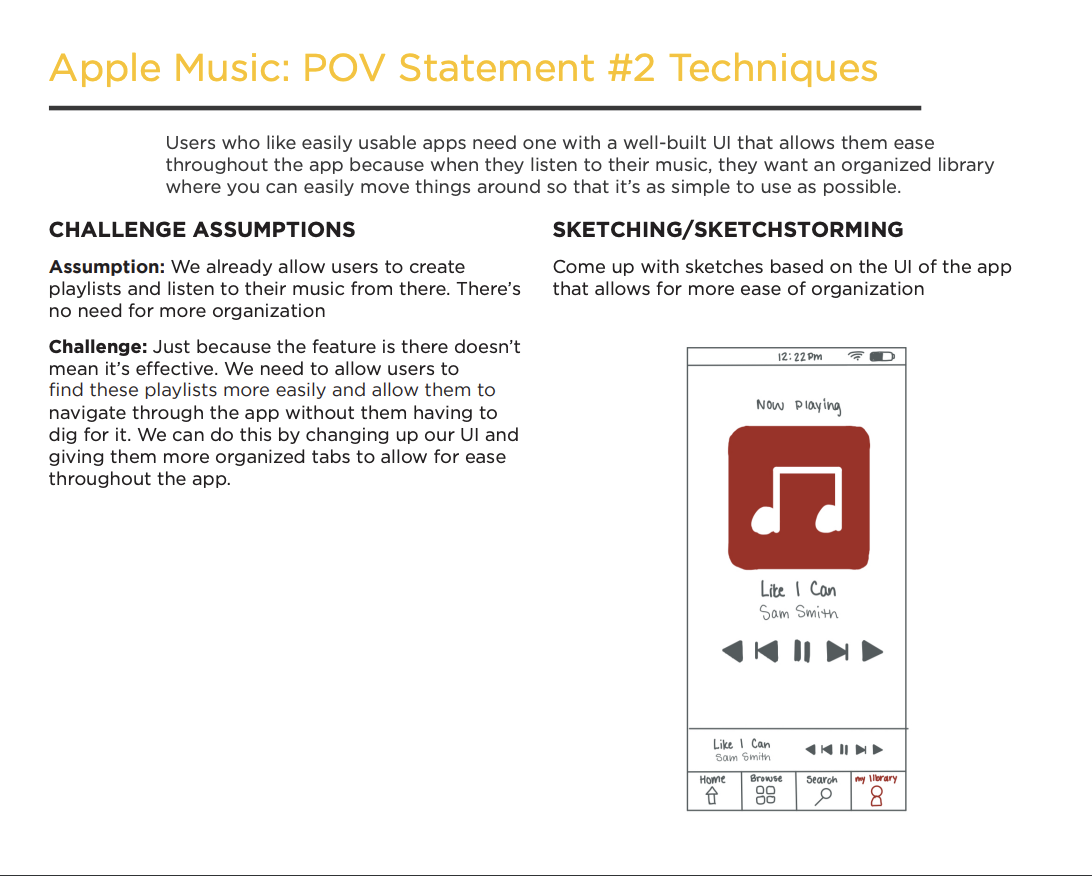
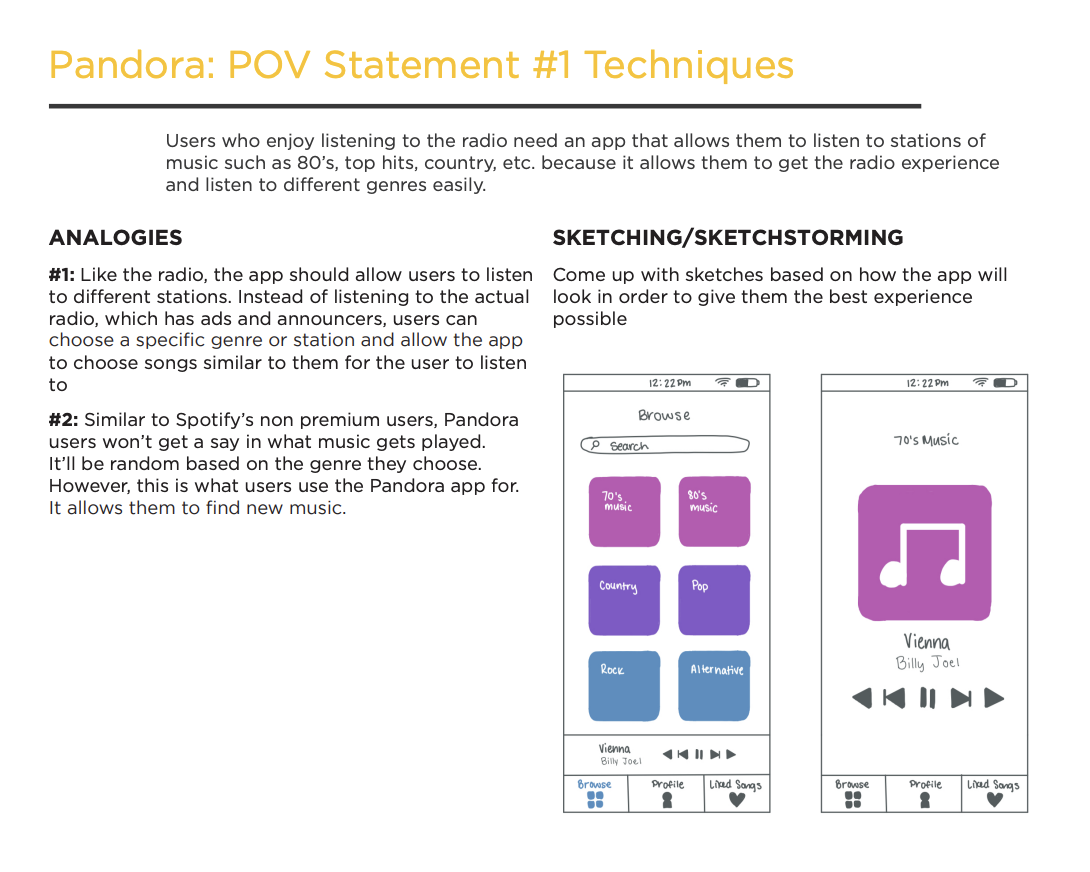
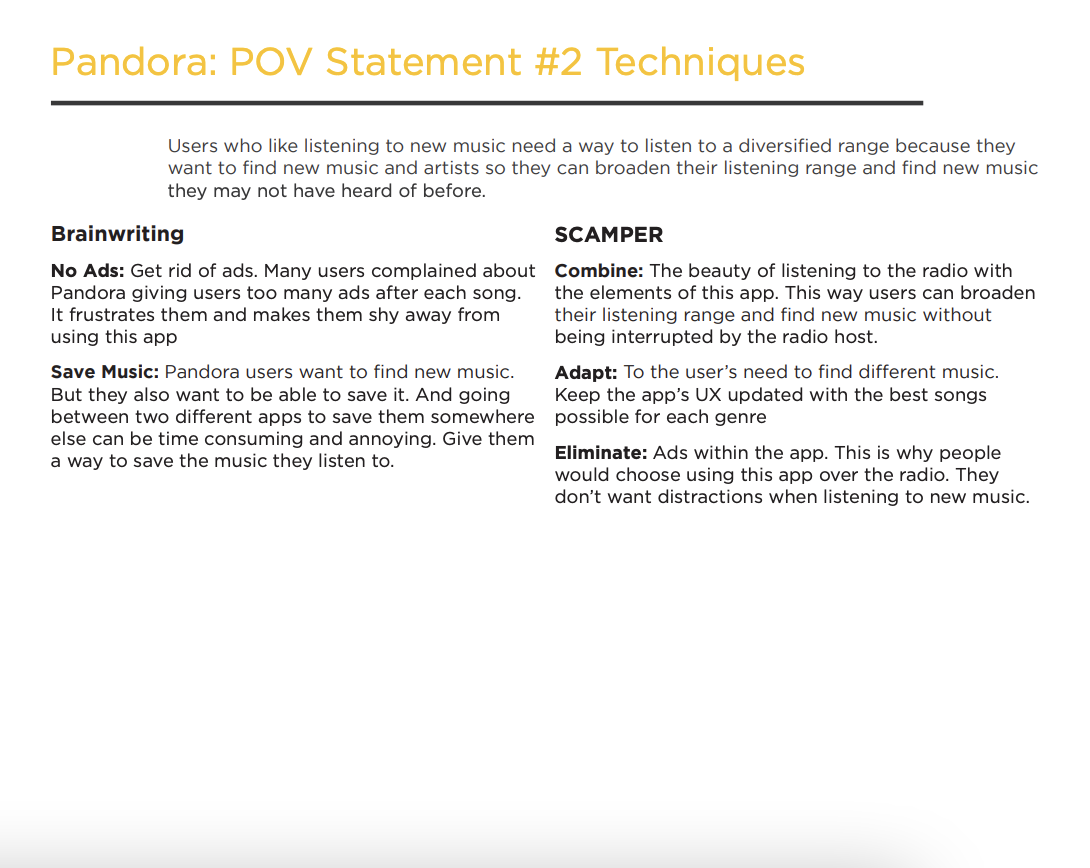
When in the ideation, the point is to come up with as many solutions as possible. Some of them might not be good or useable, but may also allow you to stem off of them to come up with a better solution which is why it’s still important to include them.
With these solutions and ideas in mind, we can now create prototypes or new app versions that cater to the needs of the users.
STEPS 4&5: PROTOTYPE & TEST
The prototype stage is very experimental because you want to build upon the best possible solution for each of the questions and problems in the first three stages. These different prototypes allow you to create different solutions and improve upon them based on how your users react. By the end of this stage, you might have a clearer view of your final product.
When you have an idea of what your final product is, it’s always important to test it out before releasing it. This allows you to see how your users interact with it. Or it might allow you to refine your prototypes and make them even better.
For example, if we were to create different versions of Spotify, users might see something new they want or might not like what is presented. If so, we need to go back to the drawing board, but it allows us to make the app or final design as useful for the users as possible since that is who we are designing for.
CONCLUSION
Learning more about the principles of user experience design and being able to immerse myself in each one really opened up my eyes to the whole process and made me understand the importance of it all. It really showed me the value of each step and how following through with each one as best as you can allows you to come up with the best solution possible for the user. It’s what allows your design, product, or service to be used to the best of its ability by your target audience.
I’ve also been able to understand each step individually in its entirety. I now know how to empathize better with my user and how to really dig deep to understand their thoughts, actions, and behaviors, and know-how they would react to a certain design decision. Overall, the design thinking process is useful in coming up with the best ideas concerning your user.



